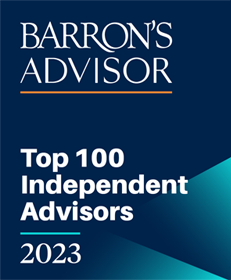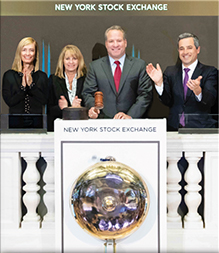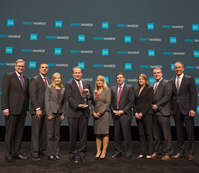You may not know this, but the average age for retiring in the United States is 65 for men and 63 for women. That 63 to 65 range seems reasonable, but today’s version of social security views “full retirement age” as 67 for anyone born after 1960. Although age may be a deciding factor for benefits, many that retire early do so for external reasons rather than their own personal choice. Layoffs, health concerns, and other personal reasons are factors that have moved up the retirement timeline for many in the workforce. For others, retiring in their 50s or early 60s is a more appealing goal to allow for the freedom to do as they please in retirement. While this achievement is possible, there are a few things to consider to make that goal a reality.
Keep in mind, that many people are living longer due to advances in medical treatments and nutrition, so it is not uncommon to plan your retirement to last until age 90 or longer. The scenarios that it would be advisable to plan for a shortened lifespan is if you have severe health issues or family history of early deaths. Outside of that, if you lead a healthy lifestyle and do not have a serious medical history, it would be prudent to aim for that 90+ age, just in case. Setting up an investment portfolio for over 30 years of expenses is something that requires a lot of forethought and meticulous planning. This is not to discourage potential early retirees, but is being mentioned as an important note to consider during your planning process. Here are a few notes to make an early retirement more of a reality.
The biggest cost hurdle for many to overcome from an early retirement is healthcare. Typically, this cost is covered by your employer, but that obviously changes once you retire. Many employers cover a portion of the health care premiums, and the ability to have group coverage often spreads out the risk to the insurer causing a discount for all in the plan. Upon retirement it is very likely that you would be fully responsible for finding health care coverage and covering the full premiums. Medicare eligibility starts at 65, so bridging the gap from those two points financially is a part of your plan that you will need to address.
As we’ve mentioned earlier, retirement today is much different than that of previous generations, especially when it comes to funding your nest egg. In the past, many benefitted from the three-legged stool of retirement funding, which consisted of an employer’s pension, social security income, and income generated from investment assets. Fewer and fewer employees today have the benefit of a pension, so more of the burden is placed on the employee to generate income from investable assets. With interest rates at or near all-time lows, this requires very careful consideration on asset mix and risk/return characteristics of your investment accounts.
Start saving early and often. The power of compounding returns works wonders over longer periods of time. The earlier you start saving, the more time your money has to grow, and the more time that money can benefit from further compounding. In order to save the amount that would be needed to fund a longer retirement, many have to make sacrifices in the near term. This typically involves paying extra attention to your spending, and specifically, recurring spending and debt levels. Keeping your expenses lower in retirement greatly reduces the “gap” that would need to be funded from your investment assets. Most workers are eligible for social security at 62, which can help cover fixed expenses and allow you to decrease your monthly draw on your investable assets. However, you need to know that claiming at this age decreases the monthly benefit amount you receive.
Lastly, retirement doesn’t have to be a binary decision. A staggered retirement where you work less hours over time can help with the mental transition to retirement while continuing to generate a cash flow. Another option is “retiring” from your previous career and shifting to a passion or position that offers more flexibility or other attributes you deem attractive. This route has a similar effect of creating some continuity of income to lower your withdrawal rate.
While there are many challenges to an early retirement, it is an attainable goal with the right approach and proper planning. To summarize, there are three very basic tasks any young person can do to begin this journey. Start investing early and save a material percentage of your pay in your younger years. Remember to keep a careful eye on expenses, debts, and healthcare costs. Become creative with what “retirement” means to you; whether that is pursuing a passion, traveling the world, or simply hanging out on the beach more. Remember, you are young and life may take you down a slightly different path than you originally anticipated. Take a deep breath when you feel off course, consult with your plan and adviser, and remember that you can change too. As always, be sure to consult with a financial planner before making any major financial decisions.
Click here to read more of my RetireMint articles. Follow me on Twitter or Linkedin.
This document is for educational and informational purposes only and does not constitute an advertisement or solicitation of any securities or investment services provided Mainstay Capital Management, LLC (“MCM”). This document should not be construed as investment, tax, or legal advice, or a solicitation, or a recommendation to engage in any specific strategy. MCM is an independent investment adviser registered with U.S. Securities and Exchange Commission. MCM specializes in workplace savings plan portfolio management and retirement planning advice for active employees and retirees. This document was prepared by MCM primarily based on data collected and analyzed by MCM. The opinions expressed herein are those of MCM alone and are for background purposes only. MCM does not purport the analysis to be full or complete or to constitute investment advice and should not be relied on. In addition, certain information contained herein or utilized to draw the conclusions contained herein has been provided by, or obtained from, third party sources. While MCM believes that such sources are reliable, it cannot guarantee the accuracy of any such information and does not represent that such information is accurate or complete. All materials and information are provided “as is” without any express or implied warranties by MCM. MCM charges its fee based on a percentage of assets under management, which creates an incentive and conflict of interest to increase assets in that account. Furthermore, MCM has two different fee schedules, and therefore has a conflict of interest when assets or accounts move from the lower fee schedule to the higher fee schedule. Opinions expressed are subject to change without notice and are not intended as investment advice or to predict future performance. Consult your financial professional before making any investment decision. Please see MCM’s Form ADV Part 2A and Form CRS for additional information.







